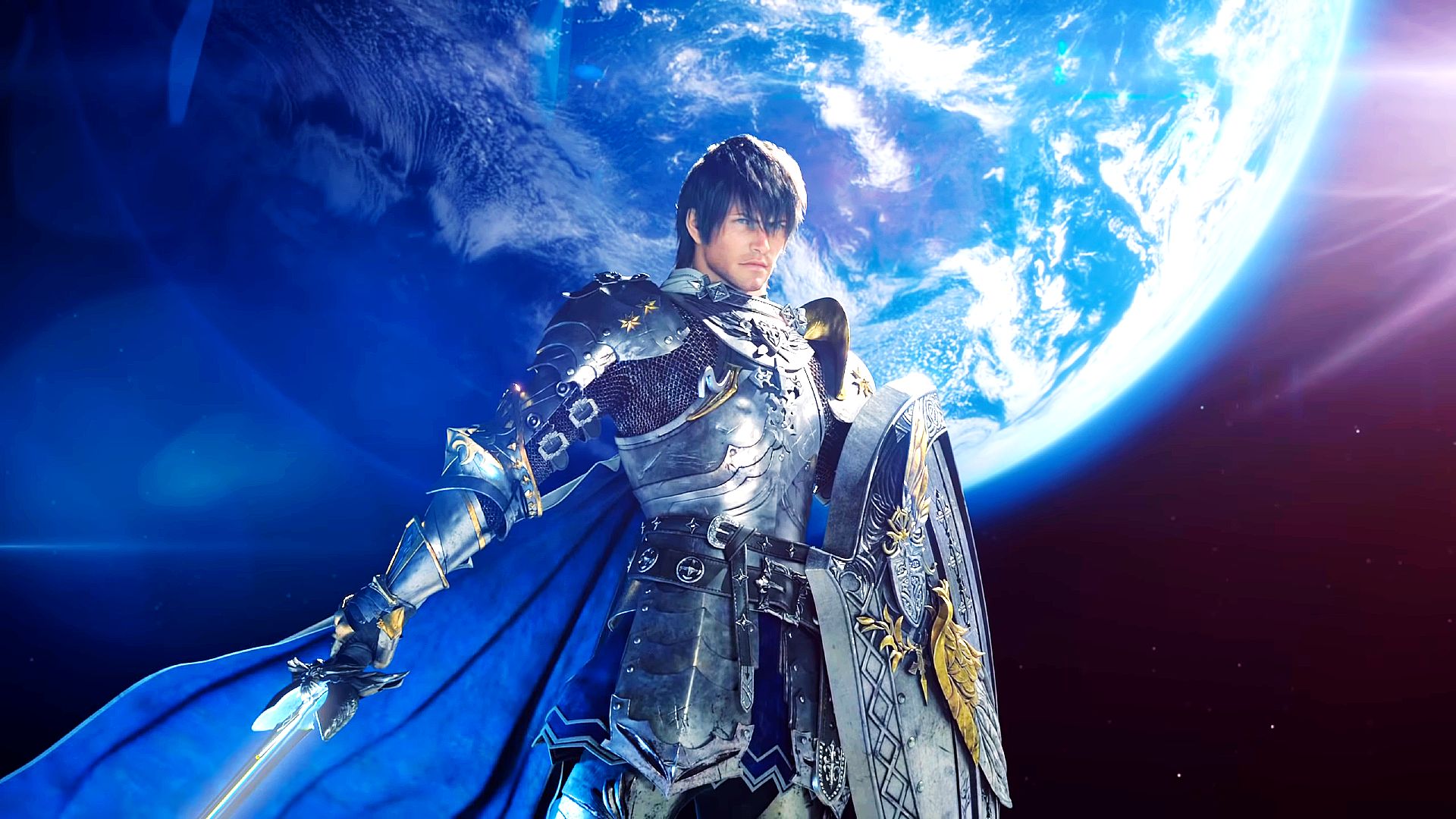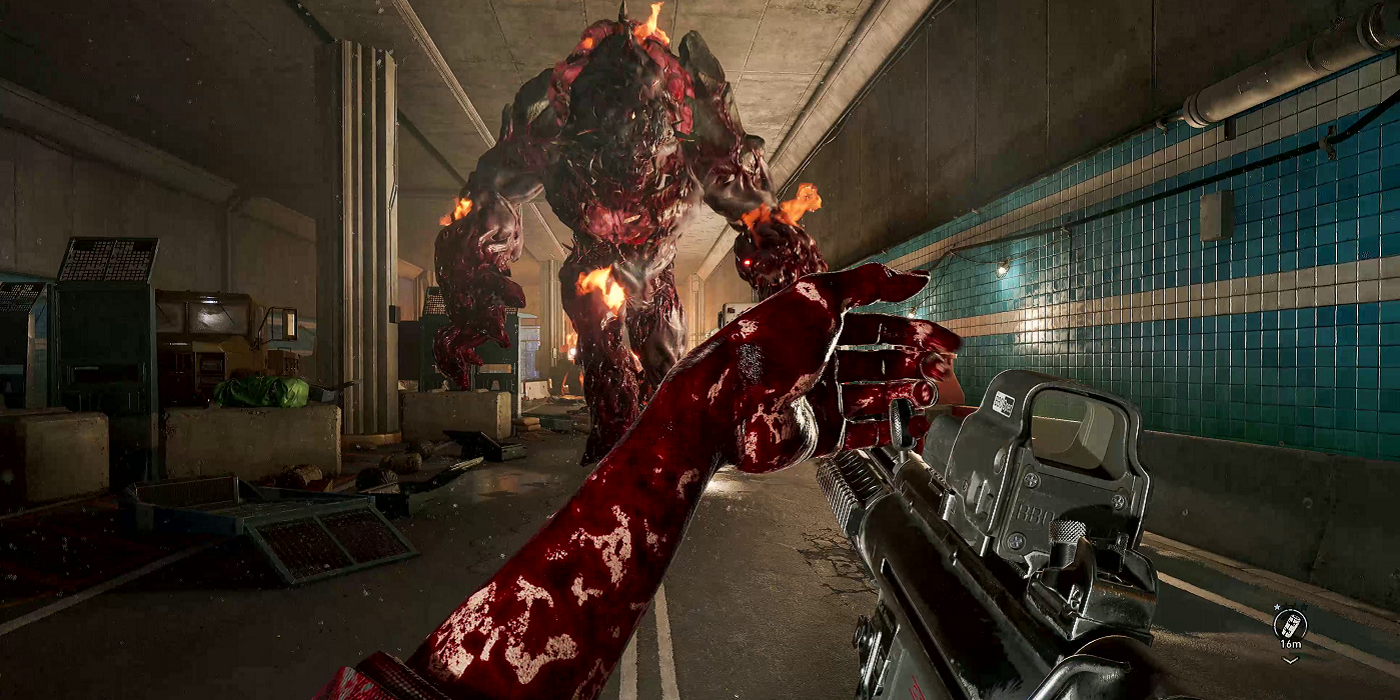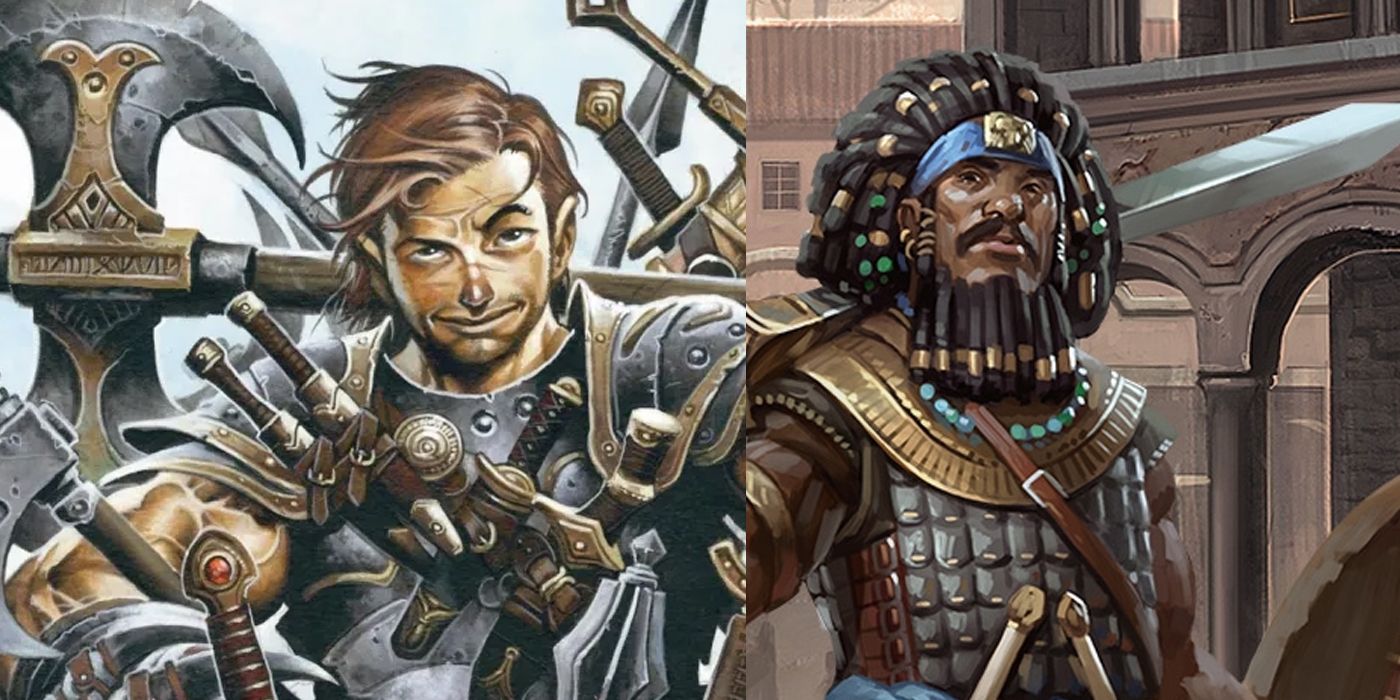
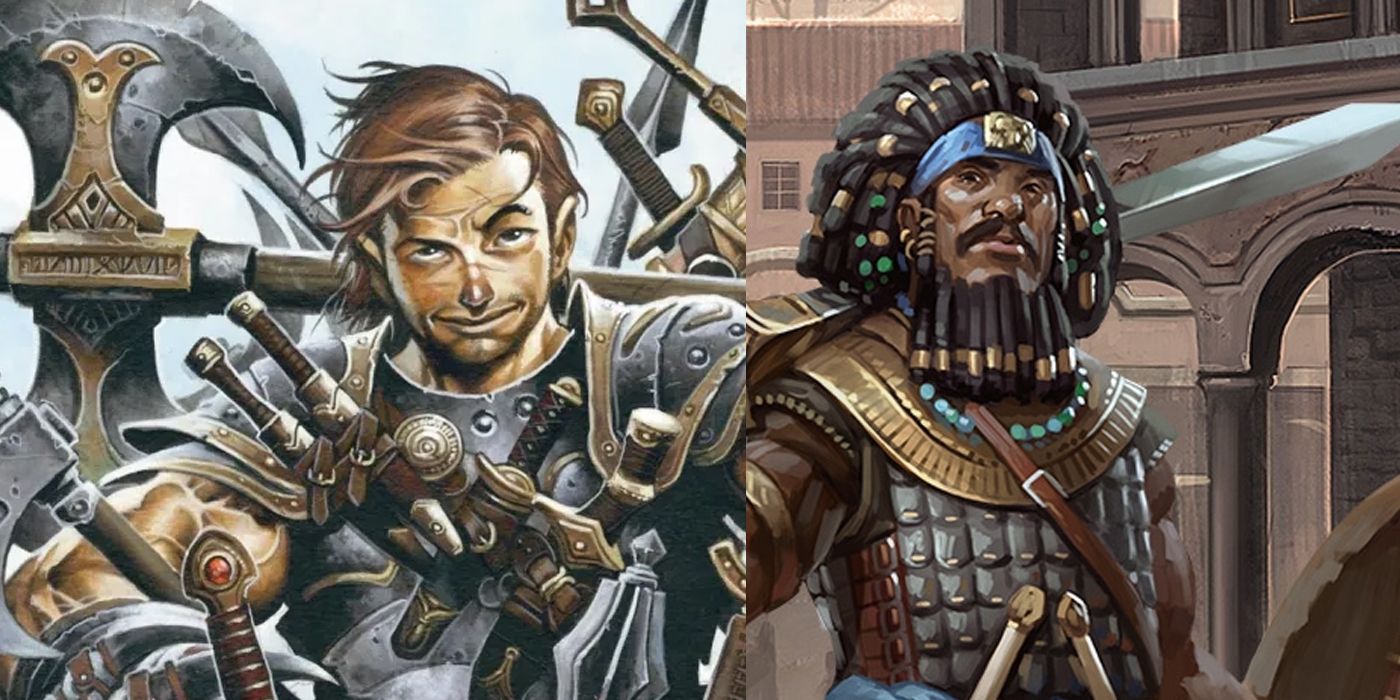
Fighters in Dungeons & Dragons become representatives of the warrior archetype. They are hardy, protective, and good with the sword. Despite their lack of flashy spells, a Fighter in D&D has a whole swath of unique features that make them just as deadly as a stealthy Rogue or a powerful Wizard. At the right hands, a Fighter can outmaneuver an entire platoon and leave them wide open for the party to attack.
RELATED: The Best Ways To Play Dungeons & Dragons Online
Newcomers to the Fighter Class shouldn't treat them as typical mercenaries with swords, though. Thanks to Martial Archetypes from various sources, Fighters can diversify their combat knowledge to accommodate a myriad of situations. And unfortunately for other Fighters, some Martial Archetypes do offer more flexibility to players.
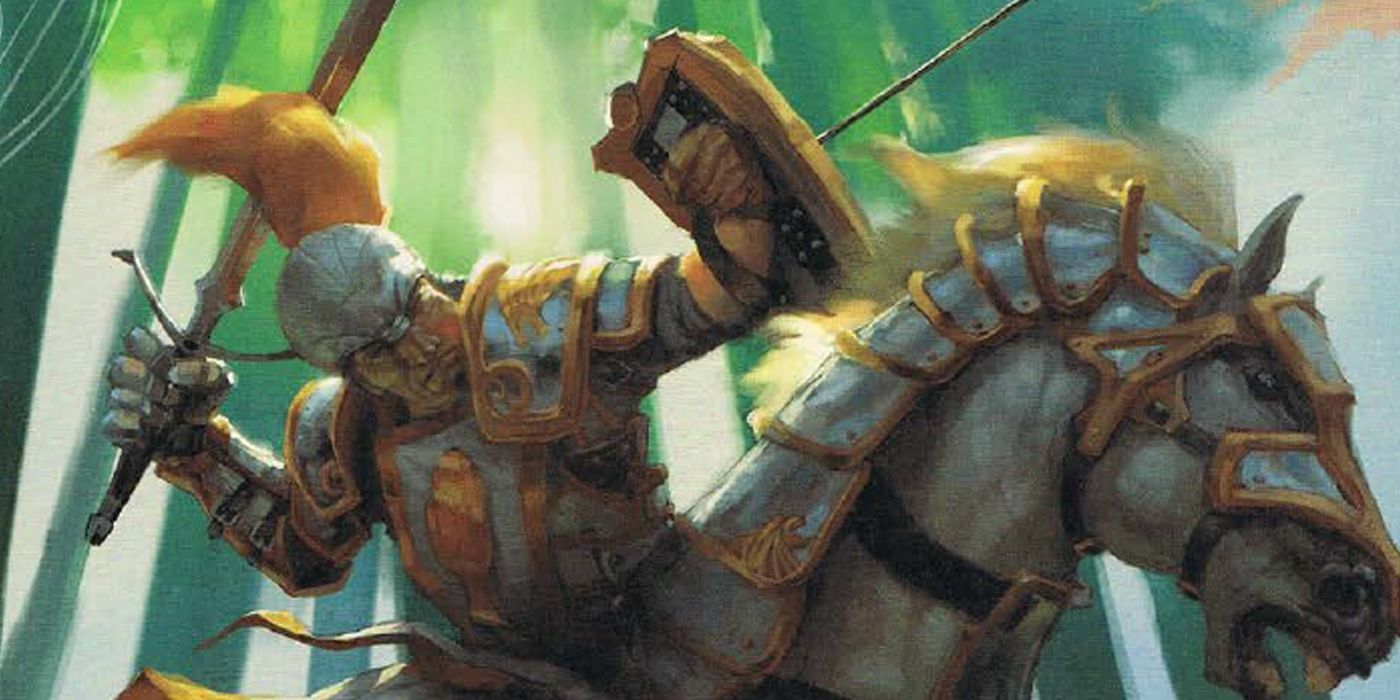
A Banneret is a knight that inspires – a role model for their great deeds in battle. And while they mostly serve as royal envoys and honorable knights, a Banneret is no slacker in terms of combat. With the right player, a Banneret can rally their allies to victory.
- Advantage: When taken individually, a Banneret can have interesting features that can definitely aid the party. Being able to act as a secondary Face of the team can take a lot of stress away from the Bard.
- Disadvantage: Despite their flavor, the Banneret doesn't have good synergy with regards to their Features. Their need to utilize Charisma can become strenuous, considering Fighters already need to prioritize their Strength and Constitution to begin with.
- Royal Envoy: The free Persuasion Proficiency at 7th Level can go a long way, especially when it comes to conversing with other NPCs.
- Inspiring Surge: At 10th Level, a Banneret's Inspiring Surge can make their Action Surge allow them to grant any creature within 60ft a free melee or ranged weapon Reaction. And at 18th Level, this can benefit two allies. When given to a Rogue, they can make another deadly Sneak Attack if possible.
- Bulwark: At 15th Level, they can extend their Indomitable Feature (Fighter) to an ally. Whenever a Banneret uses this Feature to reroll an Intelligence, Wisdom, or Charisma Save, another ally within 60ft can reroll as well.
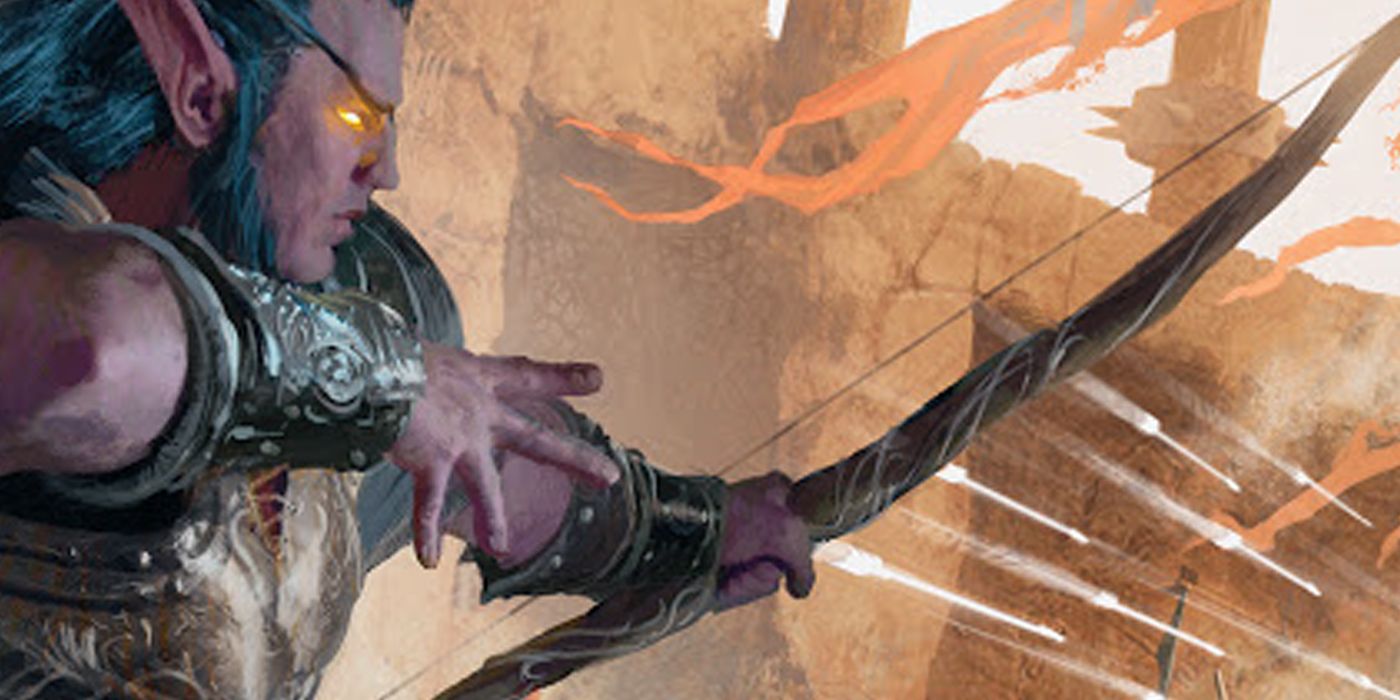
An Arcane Archer weaves magic into their arrows, transforming their shots into arcane projectiles that easily become lethal. And thanks to their training, Arcane Archers access a multitude of shots to complement their ranged arsenal. At the hands of the right player, an Arcane Archer can dominate long-ranged combat.
- Advantage: Arcane Archers are gifted with excellent Features suited for long-ranged combat. Whereas Rangers have their focus on survival, Arcane Archers focus entirely on securing the edge against opponents.
- Disadvantage: Unfortunately for Arcane Archers, their limited uses of Arcane Shot do make it a bit lacking as a signature ability. Given this caveat, there's more demand for Arcane Archers to get more creative with their combat options to avoid risking wasting their Arcane Shots.
- Magic Arrow: Any nonmagical arrows shot by Arcane Archers will be considered magical during combat. Thanks to this Feature, ordinary arrows from Arcane Archers can overcome resistance and immunity to nonmagical attacks and damage. At its core, Magic Arrow can greatly help in campaigns that have few Magic Items.
- Curving Shot: When an Arcane Archer misses an attack, they can use their Bonus Action to "curve" the attack and attempt to attack another target. This free reroll can make the most out of the Arcane Archer's attacks.
- Arcane Shot: Easily the bread and butter of the Arcane Archer, the Arcane Shot is a magically-infused arrow that has magical effects. For instance, Arcane Shot effects include Banishing Arrow that banishes foes or Grasping Arrow that gives enemies a speed debuff. Sadly, Arcane Archers ever only get two Arcane Shots-per Short or Long Rest.
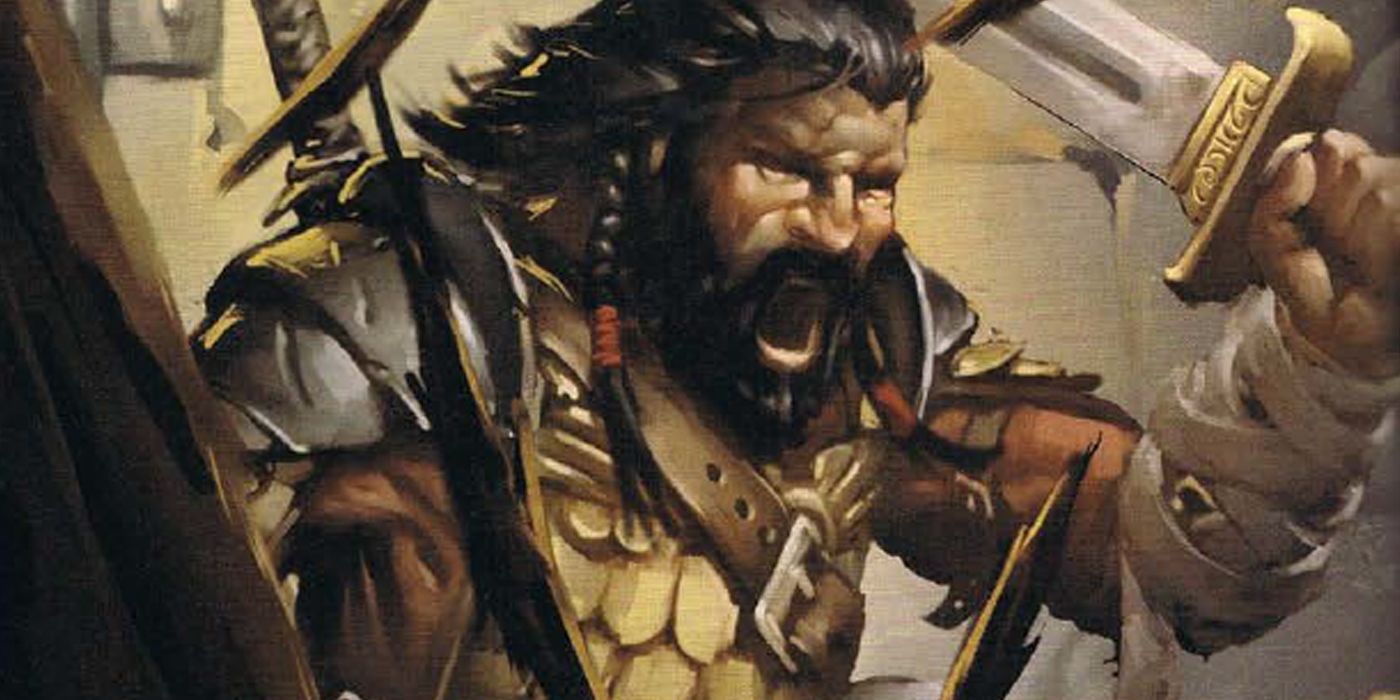
A Champion possesses a body honed to perfection. With their physical prowess and rigorous training, Champions easily pose a force to reckon with in any battle. Through the right combinations of attacks, a Champion can pummel through enemies with ease.
- Advantage: Extremely straightforward to a fault, Champions become the perfect Martial Archetype for newcomers. They're not complicated to use, and their Features have visible benefits in combat.
- Disadvantage: Despite their simplicity, it's their lack of utility that makes Champions less "useful" outside combat. Newcomers can appreciate the Champion, but those experienced in the game might easily find them lackluster.
- Improved Critical: Since Criticals do double damage, increasing the odds of hitting Crits become a big deal for damage-dealers like Fighters. Thanks to this Feature, a Champion scores a Crit even when rolling a 19.
- Superior Critical: Albeit attainable at 15th Level, Champions now score Crits when rolling an 18 as well. When combined with Feats that give Critical boosts, a Champion can become a devastating foe.
- Remarkable Athlete: Given the simplistic nature of the Champion, the half-Proficiency Bonus boost to any Strength, Dexterity, or Constitution Check can become a huge plus.
- Survivor. While attainable at 18th Level, this Feature essentially is a constant heal per turn. In turn, Survivor makes Second Wind obsolete for fighters.
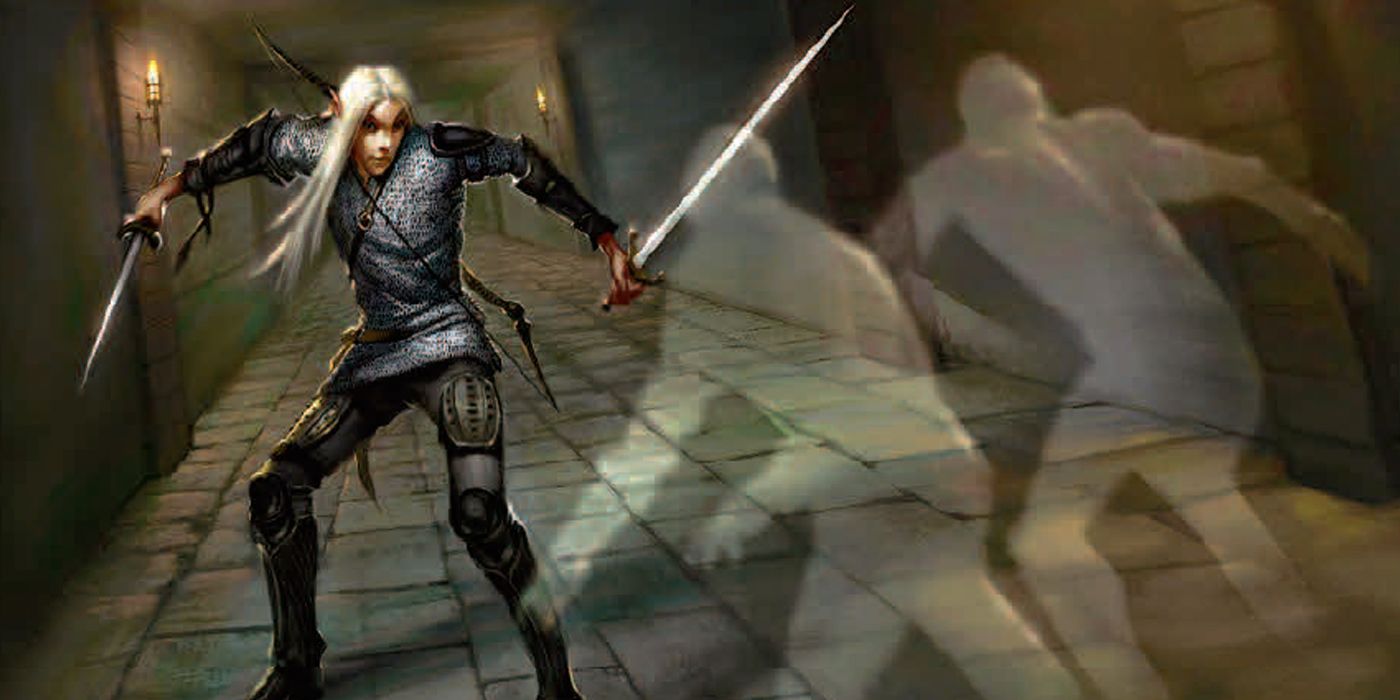
The Rune Knight taps into the latent power of runes, an ancient practice amongst giants, to imbue themselves with various benefits in combat. Being rune artisans in their own right, Rune Knights constantly empower their equipment with these magical artifacts. And with the right player, a Rune Knight can wreak havoc in the battlefield.
- Advantage: Given the passive benefits of runes, Rune Knights have more room to focus on combat engagements. And since each rune has active abilities that Rune Knights can use and regain quickly, they become a bit like Warlocks with easily replenished Spell Slots.
RELATED: Pro Tips For Playing Dungeons & Dragons While Waiting For Baldur's Gate 3
- Disadvantage: Unfortunately for Rune Knights, they do lack a lot of punch in terms of damage. Due to the rather limited nature of Runes, Fighters also need to constantly juggle priorities whenever they get to use their Runes in combat.
- Rune Carver: These Runes have passive and active effects, allowing them to tap into unique abilities that boost their potential. For instance, Fire Rune provided expertise in all Proficient tools as a passive, while they can damage restrained enemies as an active ability.
- Giant Casting: As a Bonus Action, the Rune Knight can become a Large creature and gain advantage on Strength – alongside bonus damage.
- Runic Shield: The Rune Knight can use their Reaction to force the attacker to reroll their attack roll and use the new roll. This is easily a great counter against Criticals.
- Master of Runes: At 15th Level, a Rune Knight gets twice as much opportunities to use all the active effects of their Runes. This might be a chore to obtain, but this can provide a lot more tactical opportunities for the Rune Knight.
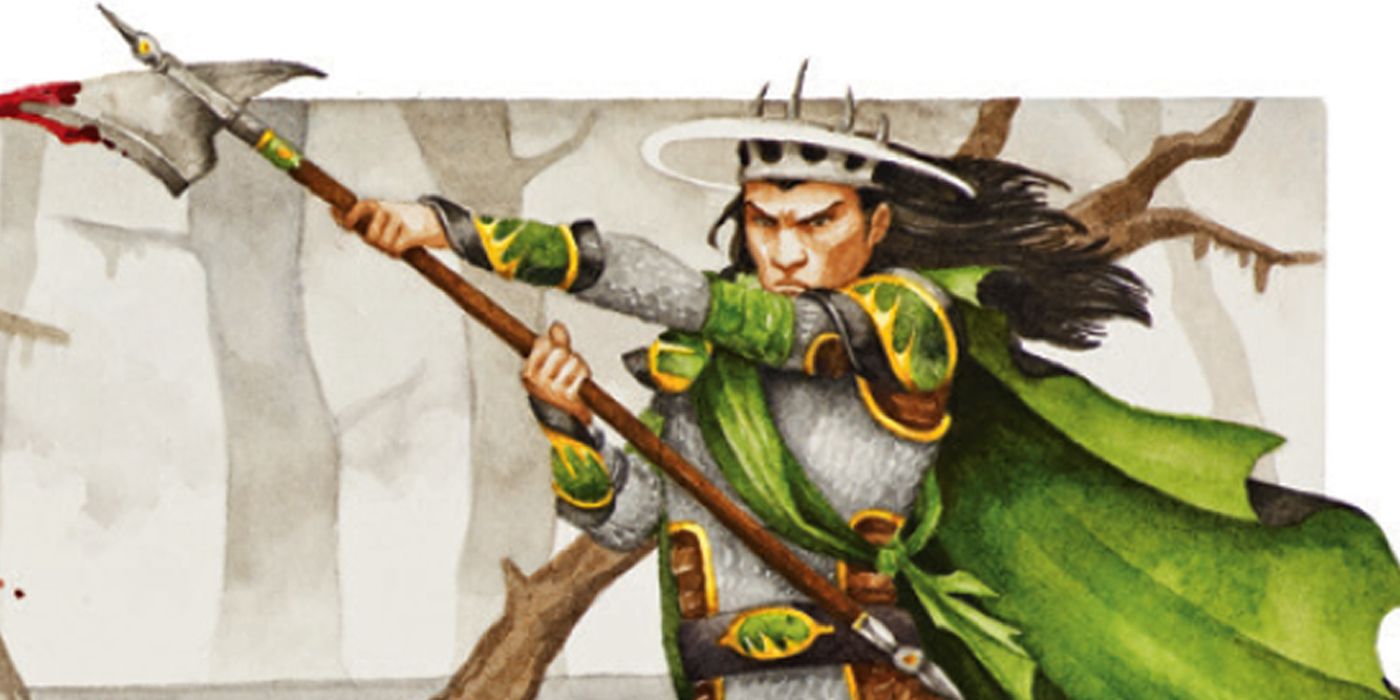
The Psi Warrior unlocked their latent psionic potential, allowing them to use their minds to augment their attacks with fierce psychic abilities. Armed with a myriad of psionic techniques, Psi Warriors tap into new resources to become more useful in the battlefield. At the hands of the right player, a Psi Warrior can easily devastate foes.
- Advantage: Blending the resource-dependent Battle Master and the magical utility of the Eldritch Knight, a Psi Warrior can tap into Psionic Energy Dice to do a wide variety of things. The straightforward nature of the Subclass can help newcomers get used to more complex Fighter builds.
- Disadvantage: Despite the multitude of options at their disposal, the Psi Warrior doesn't offer much variety in terms of how these Features are used. This makes the Subclass easier to manage but not much fun to play to those looking for crazy antics.
- Psionic Power: This counts as the major resource feature of the Psi Warrior. With Psionic Energy Dice, the Psi Warrior can protect allies, unleash a psionic strike, or unleash telekinetic movement. At 7th Level, more useful options pop up such as a power leap, and a telekinetic shove.
- Bulwark Force: At 15th Level, the Psi Warrior can provide half cover for a number of allies – effectively giving them +2 AC.
- Guarded Mind: For a character with potentially low Wisdom, Charm and Fear can become a detriment against Psi Warriors and martial classes. With Guarded Mind, a Psi Warrior can just use a Psionic Energy Die to end these effects.
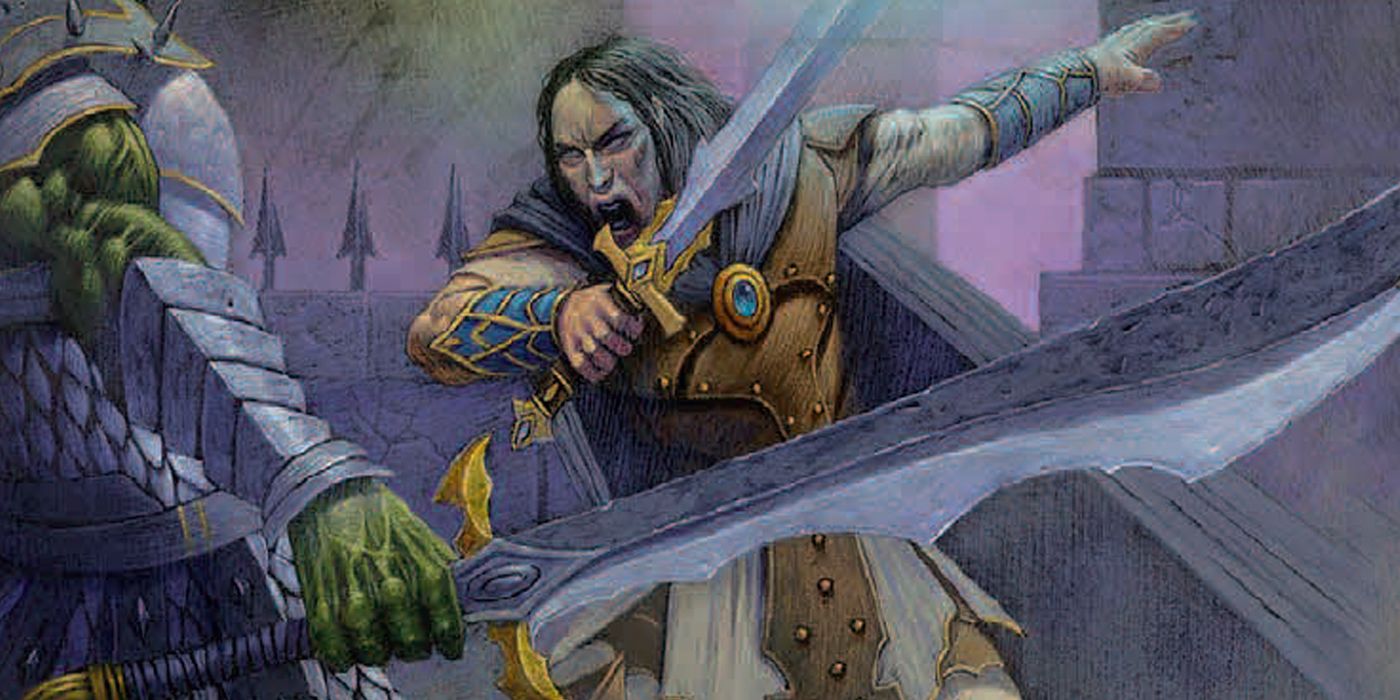
The Echo Knight taps into unrealized timelines to project their own "shades" to aid them in combat. Known as an Echo, these specters aid their "original" counterparts in combat. At the hands of a skilled player, an Echo Knight can aid allies from two fronts at once.
- Advantage: Despite the multitude of features that come with the Echo, the overall slate of abilities the Echo Knight has isn't as taxing compared to other Subclasses. Players can find a lot of versatility with the Echo Knight with little complexity.
- Disadvantage: Given the many features with the Echo Knight, players do need to make sure to maximize them to tap into the Archetype's advantages consistently. This can make the Echo Knight rather repetitive.
- Manifest Echo: Easily the highlight of the Echo Knight, Manifest Echo summons an Echo of themselves to the field. With the right positioning, the Echo Knight can attack from their position or the Echo's. They can even teleport places with the Echo to escape tricky conditions.
- Unleash Incarnation: This allows the Echo to make an attack whenever the Echo Knight uses the Attack Action a set number of times in combat.
- Echo Avatar: This essentially transforms the Echo into a scout – allowing the Echo Knight to move it and see or hear through it for up to 1,000 feet away.
- Reclaim Potential: A nifty defensive tool, this allows the Echo Knight to regain hit points as soon as the Echo is destroyed. Since the Echo only has 1 HP, this is a sizable advantage for the Echo Knight.
- Legion of One: Despite being an 18th Level Feature, this does allow the Echo Knight to create two Echoes via Manifest Echo.
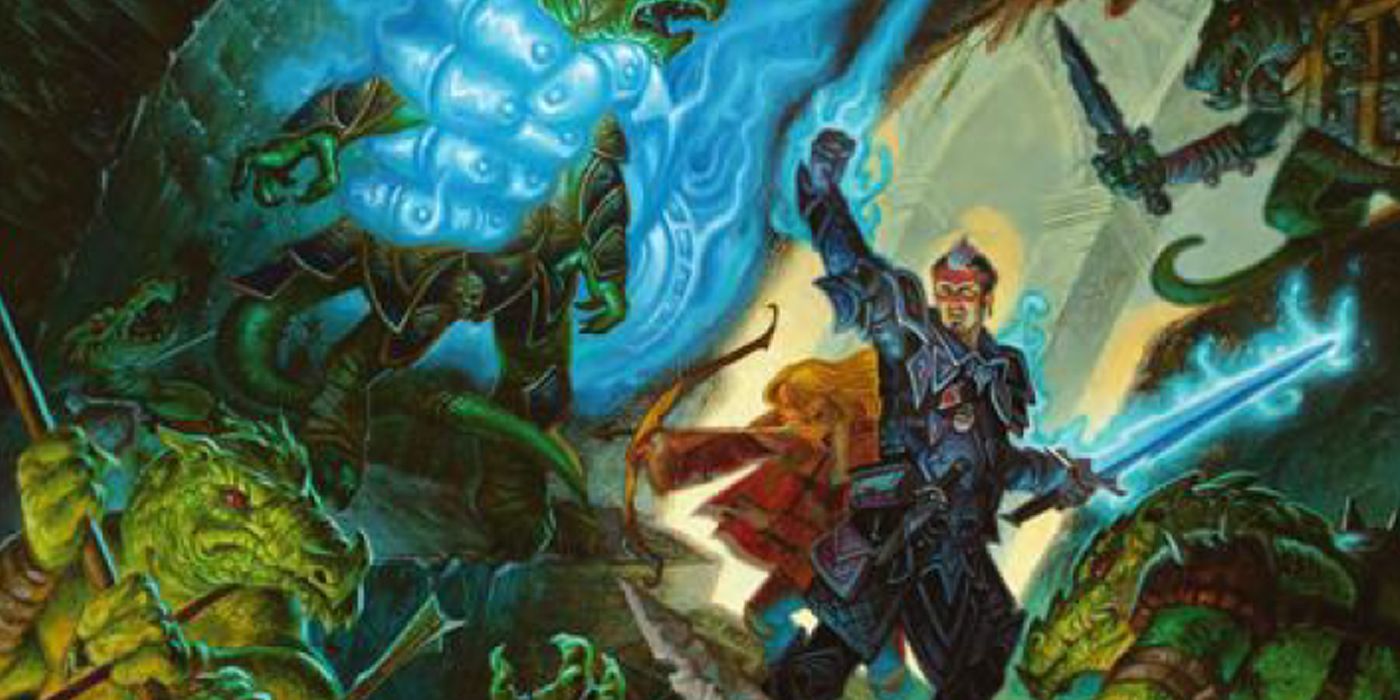
An Eldritch Knight taps into their innate arcane potential and combines it with their distinct swordplay style. Given their focus on Abjuration and Evocation magic, Eldritch Knights make perfect defenders and attackers for their allies. And with the right hands, an Eldritch Knight provides much-needed versatility to any party's Fighter.
- Advantages: At its core, the Eldritch Knight combines the melee prowess of a Fighter with the magical versatility of a Wizard. This Martial Archetype provides players access to some very efficient Wizard Spells they can cast in tandem with ferocious attacks.
RELATED: Pro Tips To Create A Cyberpunk D&D Campaign
- Disadvantages: Despite the advantages in terms of magic, the Eldritch Knight can't compare in terms of DPS with the Bladesinger (Wizard) or the Hexblade (Warlock). Given the INT-based Spellcasting of the Eldritch Knight, players do need to invest in this on top of their regular build.
- Spellcasting: Arguably the highlight of the Eldritch Knight, they now gain access to Abjuration and Evocation Spells.
- War Magic: When using a Cantrip, Eldritch Knights can now use their Bonus Action for another attack. This becomes deadlier when used in conjunction with attack-boosting Cantrips such as Booming Blade or Green-Flamed Blade.
- Eldritch Strike: Given that an Eldritch Knight's Intelligence won't be as high, their Spell DCs can pose a real problem against enemies. Thankfully, Eldritch Strike allows them to impose Disadvantage against enemies, giving the Fighter a considerable edge.
- Arcane Charge: This provides 30-feet worth of teleportation before or after an Action Surge, allowing Fighters to essentially use the Dash Action but still maximize their actions per turn.
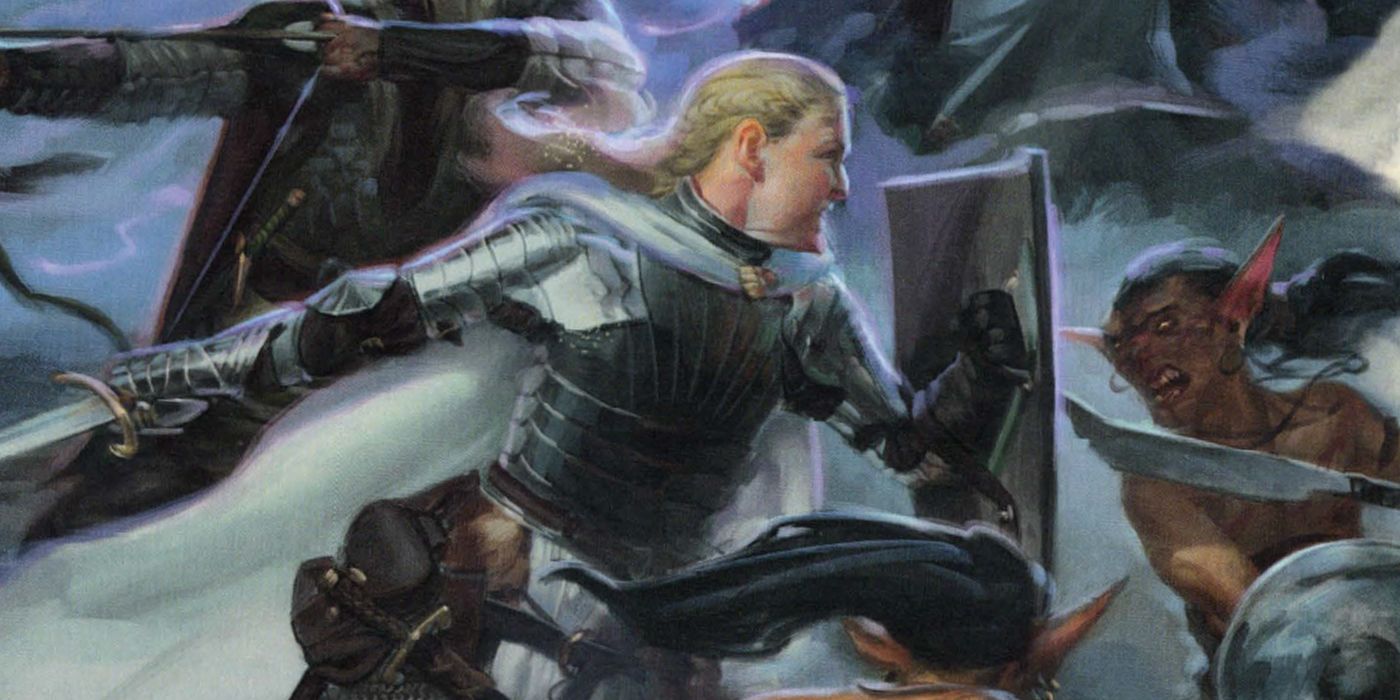
A Cavalier makes themselves known for their status as nobles and honorable warriors in court. This penchant for the social life doesn't make the Cavalier any less skilled, though. Cavaliers are known for their mastery of mounted combat and dedication to protect their charges. At the hands of the right players, Cavaliers become the perfect defenders of the party.
- Advantage: Cavaliers excel in mounted combat, with skills that enable them to fight atop a mount or even without it. Their Features allow them to defend their allies or prevent the enemy's advance with ease.
- Disadvantage: Whereas Cavaliers have some benefits when fighting adjacent to the enemy, lances do impose Disadvantage on this regard. Moreover, enemies can easily Disengage to avoid the Cavalier's attacks.
- Unwavering Mark: Cavaliers can Mark a creature they hit, forcing Disadvantage on hits towards any other target except for the Cavalier. The player can also attack a creature that makes an attack on another target regardless, this time with Advantage and extra damage.
- Hold The Line: More effective than the Sentinel Feat, this essentially allows the Cavalier to make Opportunity Attacks to anyone that moves within their reach, regardless if they're within five feet or not.
- Vigilant Defender: Despite its status as an 18th Level Feature, it's worth the wait. The Cavalier can make a special reaction on every creature's turn (except theirs) to make an Opportunity Attack against them.
- Ferocious Charger: This is a charge that forces a target to make a Strength Save or risk being knocked prone. Despite the once per turn used, this move can use the mount's speed first in lieu of the Cavalier. This can easily cripple elite foes and bosses.
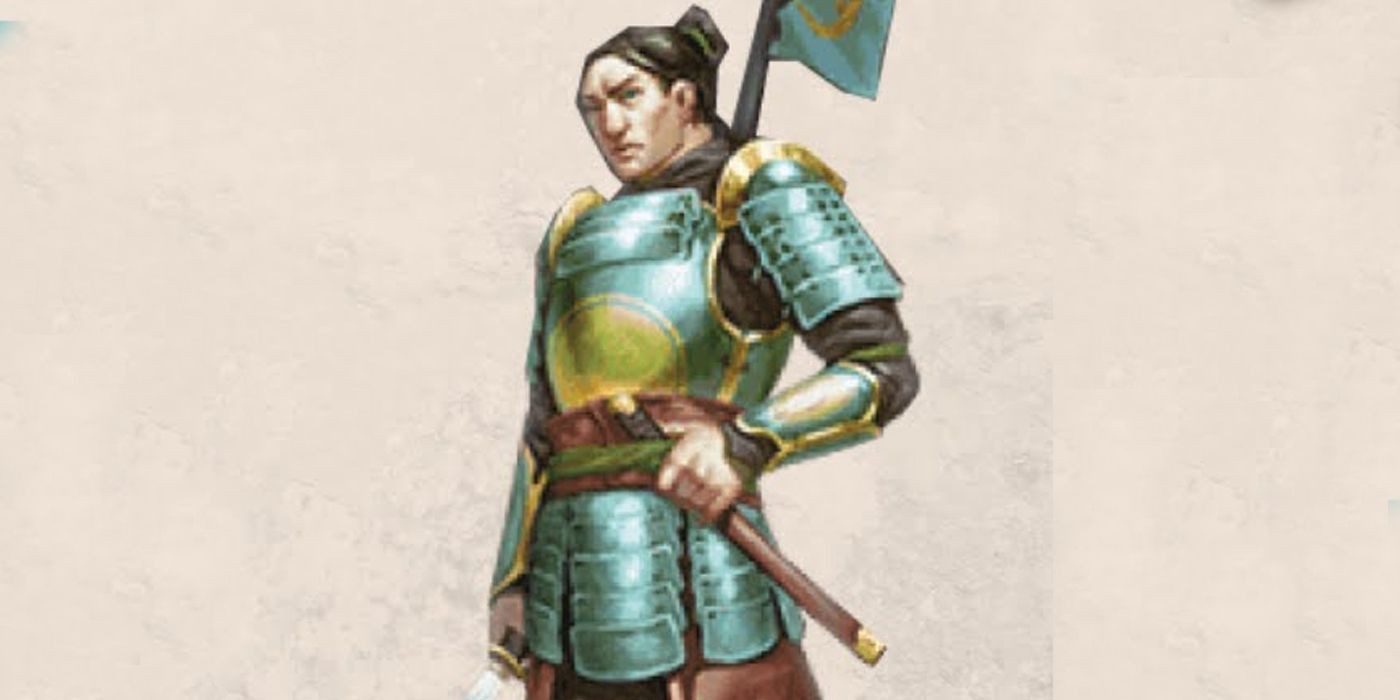
A Samurai is known for two things: their unbreakable resolve and their unyielding fighting spirit. At their core, a Samurai relies heavily on their offensive advantages to pressure enemies into surrendering. And at the right hands, a Samurai can obliterate anyone standing in their way.
- Advantage: Their Features make the Samurai extremely offensive-oriented. They almost exclusively focus on their DPS, and have abilities that help them excel in other areas for short bursts.
- Disadvantage: Samurai do lack Features that let them actively aid allies. This transforms them into somewhat of a lone wolf, capable of taking on enemies by themselves but without any support systems in place.
- Fighting Spirit: Albeit this Feature discourages two-handed weapons, its provision of a guaranteed Advantage towards attacks can become extremely helpful. When used, this Feature grants them Temporary HP as well – a welcome emergency ability.
- Elegant Courtier: This Feature allows Samurai to add their Wisdom Modifier to Persuasion (CHA) Checks, allowing them to excel even further when conversing with others. They also gain Proficiency to Wisdom Saves, something that most martial classes lack.
- Tireless Spirit: Since this Feature restores a bit of Fighting Spirit when the Samurai runs out, this allows them to place Fighting Spirit as a core part of their combat strategy.
- Rapid Strike: In situations where Samurai have Advantage to attack, they can instead roll two-weapon attacks as part of the same action. This two-hit combo can dish out a lot of damage.
- Strength Before Death: Another nifty emergency ability, Strength Before Death allows Samurai to use their Reaction to avoid falling unconscious at 0 HP. Instead, they get a full turn to retreat or get to safer ground.
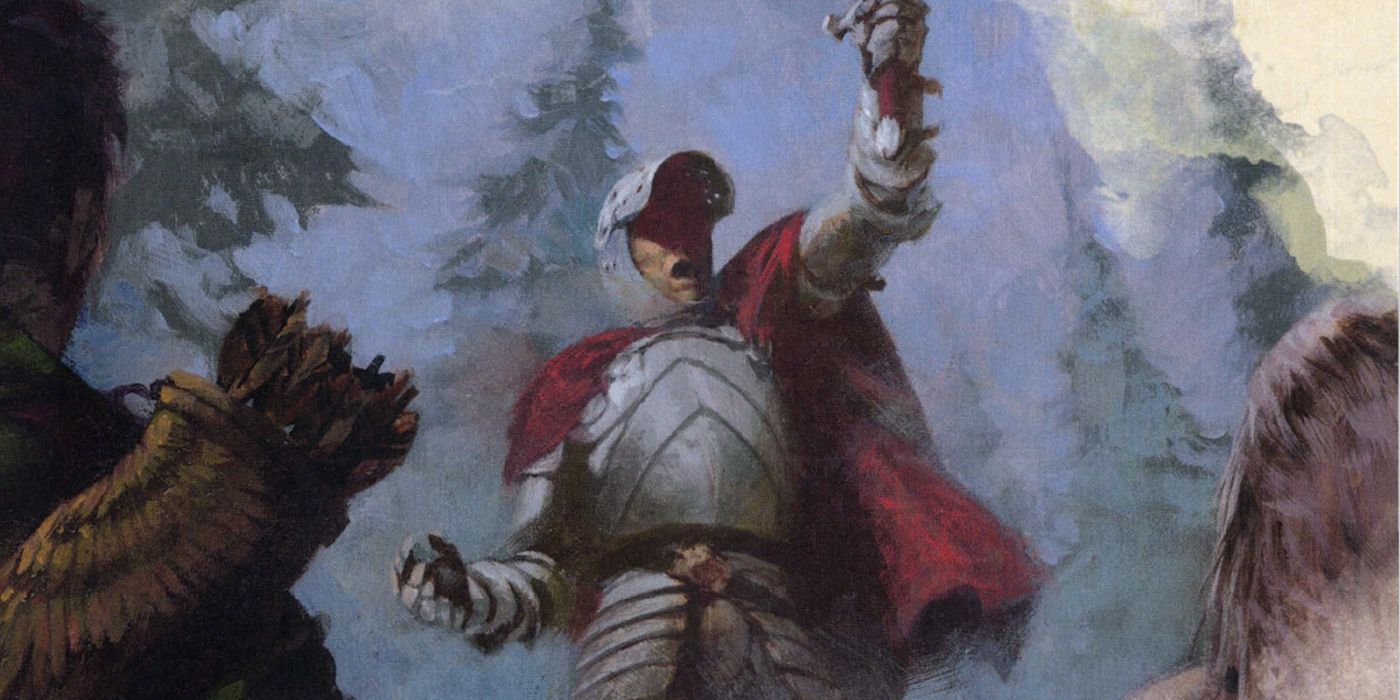
A Battle Master transforms the battlefield into an equation, one where each move can always flow into something else. Being academicians as much as warriors, Battle Masters study combat theory, artistry, and history to incorporate them in combat. Mechanically-speaking, Battle Masters may as well possess the same degree of utility as that of a Wizard or a Rogue.
- Advantage: Combat Superiority and its Maneuvers easily transform Battle Masters into powerhouses. Essentially, these combat options provide Battle Masters with the means to control the flow of combat to some extent. Moreover, there's almost always a Maneuver fit for any combat situation.
- Disadvantage: Despite its wealth of options, newcomers to the Fighter Class can easily find the Battle Master overwhelming. A lot of Combat Maneuvers tend to fit certain situations, so Battle Masters need to think ahead carefully before choosing their desired options.
- Combat Superiority: Thanks to Combat Superiority, Battle Masters gain Superiority Dice they can use to pull off Combat Maneuvers. Given its quick refresh rate, Battle Masters always have something up their sleeve whenever combat happens.
- Know Your Enemy: Albeit situational, it still helps to be able to study an NPC long enough to gather relevant information. Having some idea about the Strength Score, Dexterity Score, Constitution Score, AC, Current HP, and Total Class Levels can help the party gauge the threat level of a potential enemy.
- Relentless: While this is a 15th Level upgrade, this ensures that Battle Masters who begin an encounter without a Superiority Dice gets at least one to use.
NEXT: Tabletop RPGs That Dungeons & Dragons Fans Should Try
